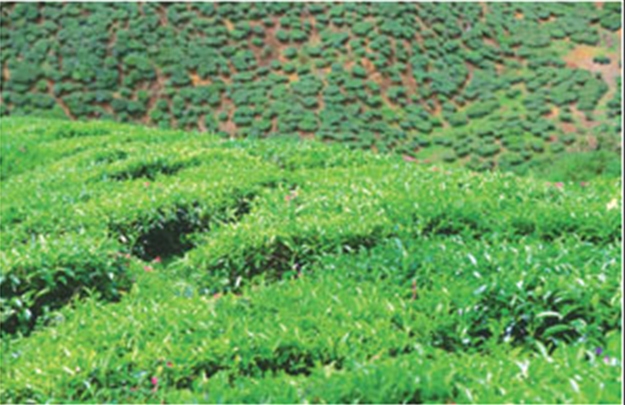Kaghan valley + tea (flora)
This is a collection of articles archived for the excellence of their content. Readers will be able to edit existing articles and post new articles directly |
Kaghan valley + tea (flora)
Tea treat
By Mian Anwar Tariq
A few years ago, I discussed with a friend of mine plans to visit the Kaghan valley and the enchanting Lake Saiful Malook. My friend is an employee of the Pakistan Agricultural Research Council. He said, while visiting the valley and the lake, I should also look in on the Tea Research Station, Shinkiari, on the silk route, which is a few kilometres away from Mansehra. I liked the idea. And I’ll tell you why.
According to Pakistani newspapers, in the past few years tea cultivation in Pakistan has been a success story. I used to think, if that is true, why is the cultivation process not taking off the way it should? May be tall claims are made to fool the people and the government.
These days, tea import is on the rise. It is the second largest agricultural commodity being imported after edible oil, costing approximately Rs12 billion per annum. The total tea production the world over is 3.82 million metric tons. China, India, Bangladesh, Sri Lanka and Kenya are the main tea producing countries, while Pakistan imports over 100,000 tons annually. Since I am a retired agricultural scientist, I am deeply interested in the development of the agricultural sector, which is considered the backbone of the country’s economy.
So, cutting a long story short, in June 2000 we hit the road to reach the Kaghan valley and that beautiful lake, Saiful Malook. The weather in Hairpur and Havalian was great, but in Abbottabad it was much more delightful.
Abbottabad is a beautiful city surrounded by towering mountains. The fascinating Shimla hill, covered by glorious pines, is a sight to behold. It is certainly the city of my dreams where I lived for a year when I was a young man, enjoying all four seasons. The city houses many fine educational intuitions like the Ayub Medical College, Burn Hall and the Pakistan Military Academy, Kakul. On the other side is the impressive Allayasi majisd, and there is a hill station nearby called Thandiani. Without having a stopover there we passed through the city. The meandering road to Manshera presented a unique landscape. We stopped at a stunning vantage point to enjoy food. We had our lunch at a roadside hotel under a majestic Banyan tree. It was sumptuous. The breeze was cool, invigorating and quite comforting. After travelling to some distance, we saw some dense bushes on the left side and in a short while we were on the premises of the Tea Research Station, Shinkari.
When I entered a place called the experimental area, I for the first time saw the tea cultivation process. Before that, I used to think that the success of tea cultivation was a false claim. Here I must mention that since 1958, attempts were being made to make the process a successful one, but it was in 1975 that it finally started bearing fruit with Chinese assistance, and when the Pakistan Agricultural Research Council took over the project.
To achieve the goal, a number of Chinese varieties were introduced. The experimental area covered approximately 40 acres, mostly by Qi-men cultivar. Tea germplasm from other countries were too introduced to test their suitability to different regions.
In the past, it had happened that various diseases hit the country because of some flaws in the process. Hence, it is suggested that extra care should be exercised to avoid such mishaps. A proper breeding or hybridisation section may be established to develop and breed cultivars by crossing different genotypes suitable to our conditions. Biotechnology and low doses of irradiation can gainfully be employed as an additional tool to create desirable variations. However, emphasis must be put on conventional breeding and subsequently the selection of desirable material followed by the ruthless rejection of hybrid material. It will ultimately lead to the production of better new varieties. Tea is consumed all over the world. It is liked by the rich and the poor, the young and the old, the villager and the city dweller alike. No breakfast or any social get-together is considered complete without it. Some people are so addicted to it that they don’t feel fresh or ready to do their daily chores or jobs without having their tea. There are people who drink many a cup in just a single day.
